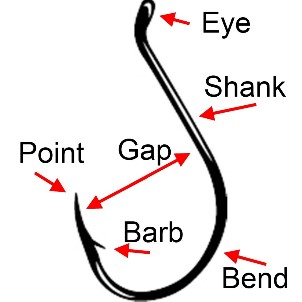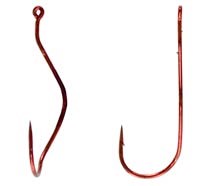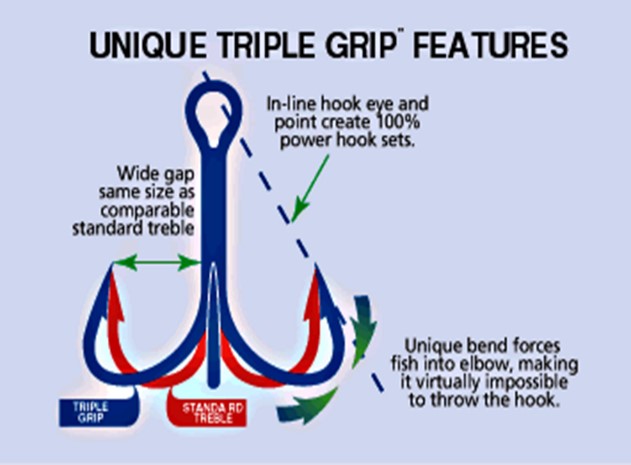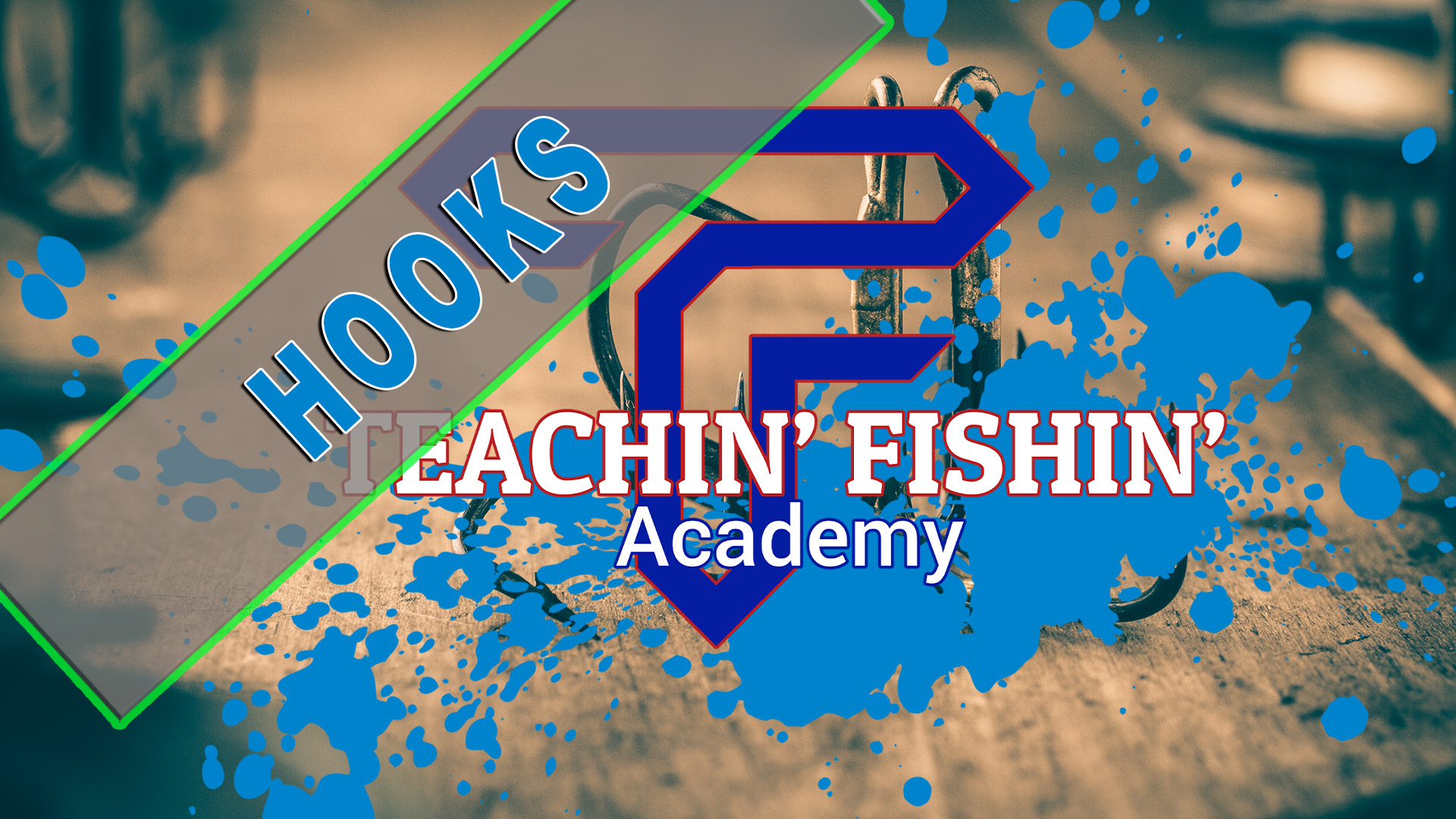HOOKS: OVER LOOKED yet IMPORTANT
Little things mean a lot when fishing, and the ONLY thing between you and the fish of a lifetime is the hook it has in its’ mouth!
Choosing the proper and best fishing hook for the presentation you are using is critical to fishing success. Join Captain Lance and he discusses and breaks down the different types and styles of hooks you need for catching more fish.
Captain Lance explains items like hook wire strength, gap size, point type, eye style and more to help you always have the best fishing hook, whether it be a single or treble hook. Then, he will cover specific hooks for individual walleye presentations from crankbaits and spoons, jigs, stinger hooks, live bait rigging and more.
Get to the Point – understanding fish hooks
Imagine having the fish of a lifetime on the end of your line, the day you’ve waited for. The only thing between you and landing that fish is the hook in that fish’s mouth. Is it the best hook for the presentation? Is it sharp enough? Is it going to hold? Picking the right fishing hook for the presentation you are using is a factor most anglers don’t spend enough time worrying about. Here are a few tips to picking the best hook for your presentation.
Hook Basics
 Understanding how a hook is built and the specific parts is a great place to start. The “Eye” is the part of the hook where the line is attatched. Most common eye types are straight and up-turned. Straight eyes are most popular on treble hooks whereas up-turned is most common for hooks that will be snelled. Gap is important when choosing a hook. A gap should be wide enough to clear any bait or plastic on a hook, but not too wide. The wider the gap of a hook is, the less energy from a hookset is transferred to the hook point. Special gap configurations are used for some walleye applications, such as treble hooks for spoons and crankbaits. Hook points are also important. Select straight points for most walleye applications.
Understanding how a hook is built and the specific parts is a great place to start. The “Eye” is the part of the hook where the line is attatched. Most common eye types are straight and up-turned. Straight eyes are most popular on treble hooks whereas up-turned is most common for hooks that will be snelled. Gap is important when choosing a hook. A gap should be wide enough to clear any bait or plastic on a hook, but not too wide. The wider the gap of a hook is, the less energy from a hookset is transferred to the hook point. Special gap configurations are used for some walleye applications, such as treble hooks for spoons and crankbaits. Hook points are also important. Select straight points for most walleye applications.
Single Hooks
 Single hooks are most often used when fishing live bait. They are most often used on crawler harness, when live bait rigging, fishing bait below bobbers and on jig heads.
Single hooks for crawler harnesses should be wide gap with an upturned eye. The up turned eye makes it perfect for Snelling the hook to your line when tying a harness. Use hooks big enough for the size fish you expect to catch, but small enough to allow the crawler to move naturally. Hooks in sizes 1 to 6 are perfect for crawler harness most places.
Single hooks are most often used when fishing live bait. They are most often used on crawler harness, when live bait rigging, fishing bait below bobbers and on jig heads.
Single hooks for crawler harnesses should be wide gap with an upturned eye. The up turned eye makes it perfect for Snelling the hook to your line when tying a harness. Use hooks big enough for the size fish you expect to catch, but small enough to allow the crawler to move naturally. Hooks in sizes 1 to 6 are perfect for crawler harness most places.
A few specialty single hooks should also be considered for crawler fishing. “Slo Death” hooks are designed to fish a piece of crawler, at a VERY slow speed behind light weights. The multiple bends on the shank make the crawler move in a circular motion as you move slowly along. Slo-Death hooks are a great choice for finicky walleye. Another option for crawler fishing is to replace a 2 or 3 hook harness with one single hook. Long shank single hooks with a straight eye (often called an Aberdeen hook) are an option to consider when walleye are finicky, in clear water or biting short. By threading the crawler completely onto the hook an angler can put the single hook further back in the crawler and use the straight eye to hold the crawler on. This is a great harness modification that can catch some big fish in the right conditions.
Single hooks for fishing minnows should be the proper size for the minnow being fished. Live bait rigging with smaller minnows works well with an up-turned eye wide gap hook. Depending on bait size and mass, anglers will be using hooks from size 4 up to size 2/0 should be in your tackle box and matching the hook size to the minnow you are using is critical.
Treble Hooks
 Treble hooks are simply a single hook welded to a double hook and are a staple for walleye anglers that fish crankbaits and spoons, as well as being used on crawler harnesses and stinger hooks for vertical jigging. One of the most important factors to consider when choosing a treble hook is the gap SHAPE, be it either round bend or Extra Wide Gap.
Round bend trebles are the best choice for applications where walleye will hit a lure but may “hold” the bait or swim with the bait or lure. Trebles used for stinger hooks and on crawler harnesses should be wide gap, round bend trebles since walleye will often open their mouth, “eat” the hook, then simple swim along without turning away from the lure or bait. The wide gap, round bend hook has the best chance of catching some flesh in these applications.
Treble hooks are simply a single hook welded to a double hook and are a staple for walleye anglers that fish crankbaits and spoons, as well as being used on crawler harnesses and stinger hooks for vertical jigging. One of the most important factors to consider when choosing a treble hook is the gap SHAPE, be it either round bend or Extra Wide Gap.
Round bend trebles are the best choice for applications where walleye will hit a lure but may “hold” the bait or swim with the bait or lure. Trebles used for stinger hooks and on crawler harnesses should be wide gap, round bend trebles since walleye will often open their mouth, “eat” the hook, then simple swim along without turning away from the lure or bait. The wide gap, round bend hook has the best chance of catching some flesh in these applications.
Trebles for casting or trolling crankbaits and/or spoons can be (and are preferred by most anglers) what are known as Extra Wide Gap trebles. In an EWG hook, the gap is extra-wide, and the hook point bends back toward the hook shank. This creates a gap shape that makes it very difficult for a hook to come loose in the process of fighting a fish. It also creates a “cam” action, which almost always results in a fish having at least 2 points stuck in their face! For the EWG hook to work properly, there needs to be an aggressive movement of the walleye in a direction other than the direction the hook is being pulled…something that happens with crankbaits and spoons but may NOT happen with crawler harnesses and stinger hooks.
So Much More
We have covered some of the basics of choosing the best hook for the presentation you are using. This is a good place to start, but there is so much more to be covered in future blog articles. Things like hook wire strength, shank length, hook color and more lets anglers fine tune their hook choice to be the PERFECT choice for any presentation.

